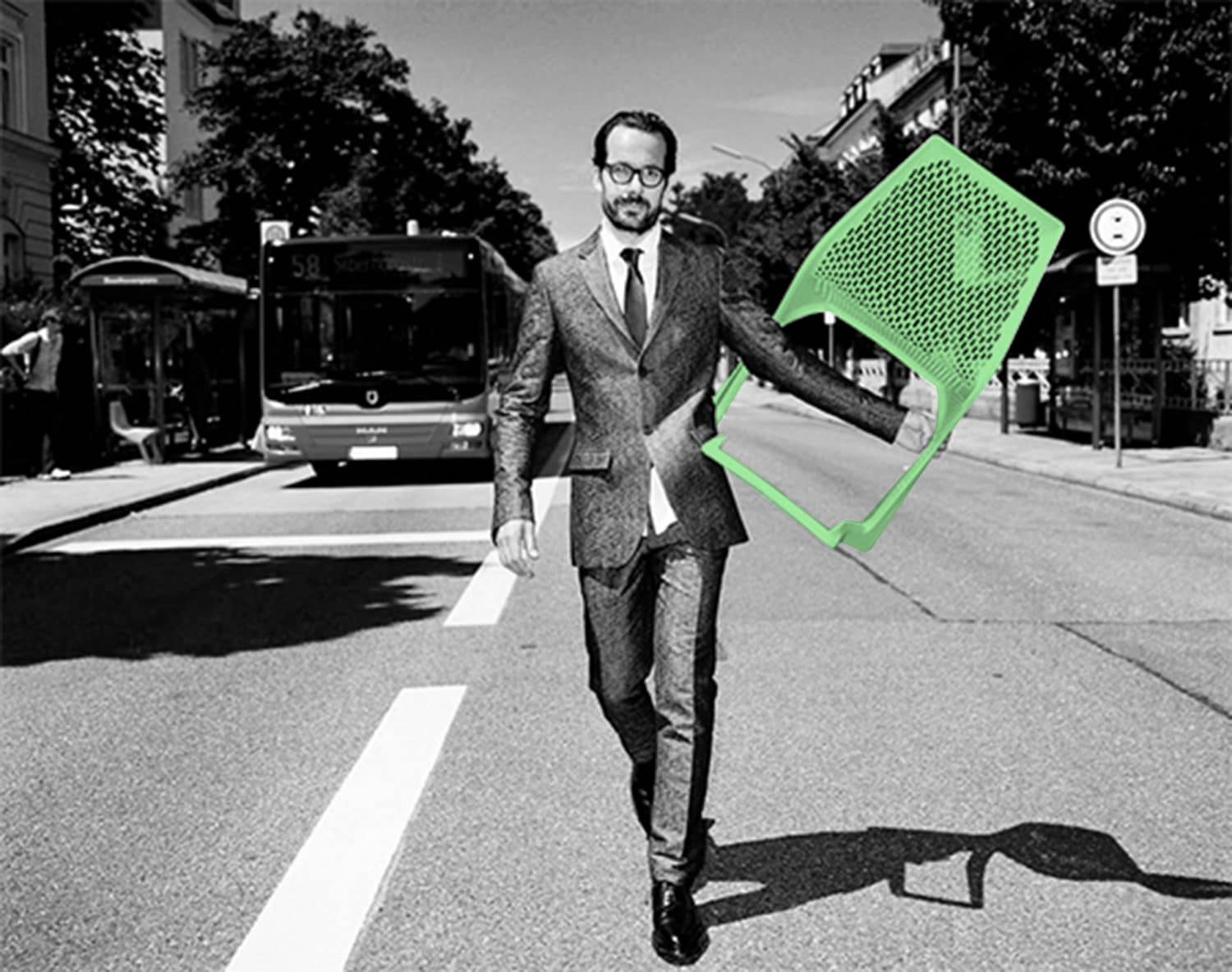INTERIOR
Konstantin Grcic’s Geometry #Konstantin Grcic

Chair_One is the most recalled design when we thought about the work of the German Serbian-born designer Konstantin Grcic. This chair’s shape of a facetted polyhedron is due to the material and the technique used for producing it, dye-casted aluminium. The designer’s target was to make a chair out of a single piece using this technique, so during a lightening process the piece was reduced to its edges. The result of the process is a light, geometrical but surprisingly comfortable chair.
Rationality, functionality, rational thought and structure are concepts that are deeply embedded in me. At the same time, I work to contradict all this. I try to express a concept of functionality that is also ironic; I try to construct a system that is also slightly chaotic.Konstantin Grcic, 2004
The angular shape of the big table Pallas comes also from the material it is made of, a steel sheet. The folds of the sheet give the table its sturdiness and resistance and also a noticeably strong image. Comparatively, the same folds are almost light and playful in the Diana side tables, where the steel sheet protrudes and folds in every possible direction. This composition of planes of bright colours gives these tables a clearly Neoplasticist character.
Together with the Pallas table, the Mars chairs share the same language of folds, slopes and edges. Although they have a similar outline, the Venus chairs are radically different: by changing polyurethane by bentwood, the folds become softer and the facets turn into smooth, seamless surfaces.



